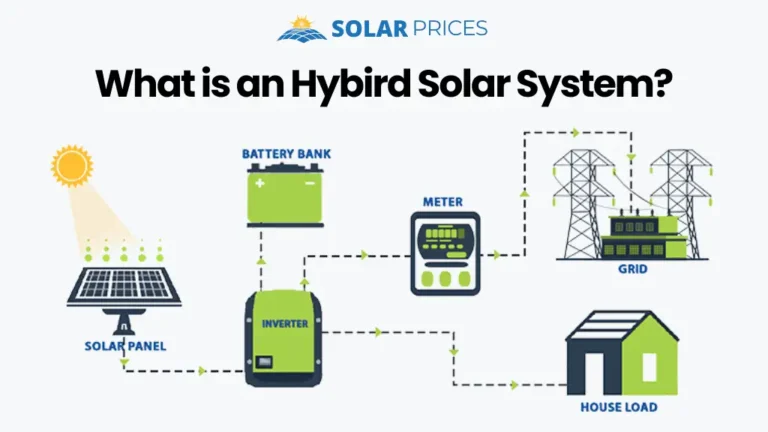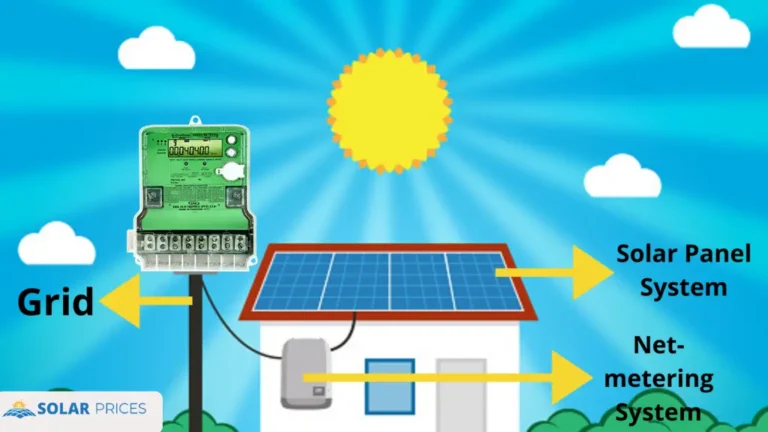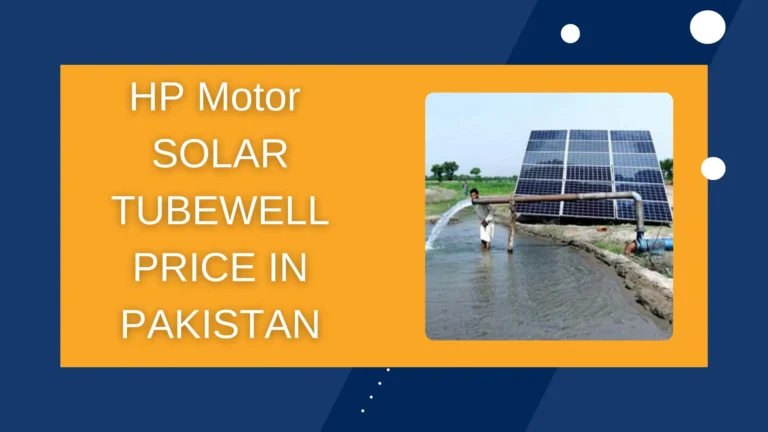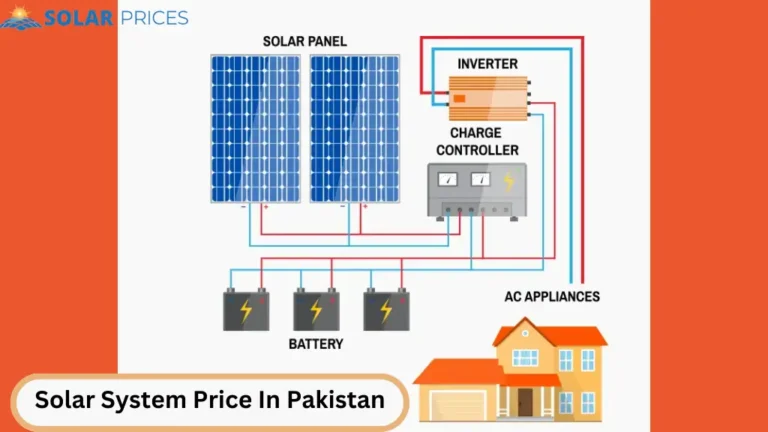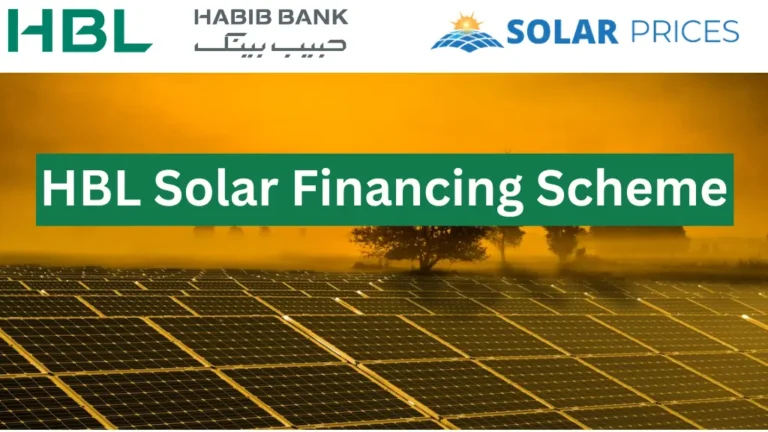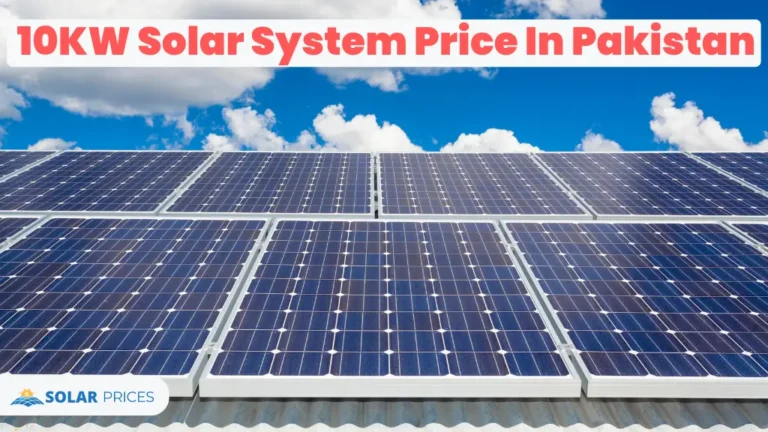Which Solar System Is Best For You? A Comprehensive Guide on Solar Systems
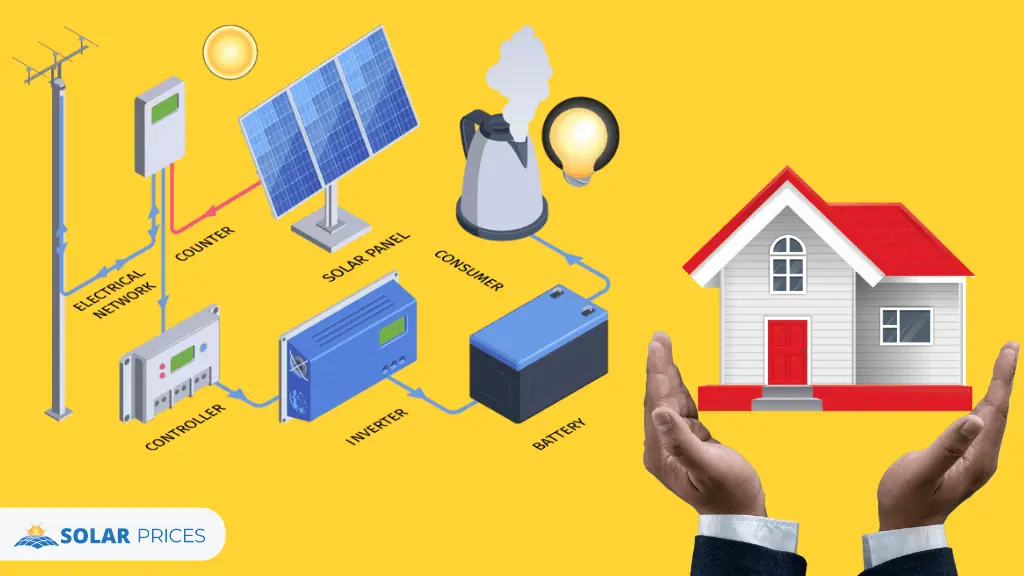
Choosing the best (right) solar system is crucial for maximizing the benefits of solar energy. There are multiple options available in the market, including off-grid, grid-tied and hybrid solar systems, it’s essential to comprehend the differences among them and determine which system suits your personalized electrical requirements.
In this article, you will get an in-depth analysis of different solar systems, tips for choosing the best solar system, a comparison of solar system types, additional components and features, environmental impact, and case studies to help readers make informed decisions. Let’s get started
Understanding the Concept of Solar Energy Before Solar System
Solar energy is a renewable and sustainable source of energy derived from sunlight. It offers numerous benefits, including reducing electricity bills, increasing energy independence, and lowering carbon emissions.
Transitioning to solar energy is crucial to tackling climate change. Worldwide solar energy adoption will ensure a cleaner and more sustainable future for generations to come.
Why Invest in Solar System?
For years, Pakistan has been facing a persistent energy crisis, burdened by the hefty costs of importing crude oil to fuel electricity generation.
This has caused very high (neck-breaking) electricity bills for the average Pakistani. Meanwhile, there’s been a noticeable interest among Pakistanis in solar energy (solar panels).
Many are keen to explore solar energy solutions as a viable alternative to the traditional grid power station.
Have you ever thought about shifting to solar power in Pakistan? It’s worth considering the installation of solar panels at home.
Research studies and statistical data models represent that Pakistan has an impressive solar energy potential of more than 2.9 million megawatts.
The sad news is that no Govt. have seriously considered this renewable regional asset to facilitate the nation. To date, we are harvesting only a fraction of this vast resource.
Which Solar System Type is Best for You?
There are three main types of solar systems, currently installed across the whole Pakistan. People usually ask which type of solar system is best for them.
Answering this question is not as simple as cutting a cake. Every solar system type has its own merits and demerits.
You have to understand each type to discover which type suits your location and energy requirements. Visit this youtube channel to get expert advice:
Let’s explore them one by one in the following section.
1. Grid-Tied Solar Systems
A solar system that works in collaboration with a grid power station and feeds its power generation to the utility grid is known as a Grid-tied solar system.
Such systems are connected to the utility grid to earn credits for solar system owners. This allows homeowners or businessmen to generate electricity during the day and export excess energy back to the grid.
These systems do not require battery storage and are more cost-effective compared to off-grid systems. However, they do not provide power during grid outages even on a clear and sunny day. This is a major demerit or disadvantage of grid-tied solar systems.
2. Off-Grid Solar Systems
Contrary to the above system type, off-grid solar systems operate independently of the utility grid. So, these solar systems require battery storage to store excess energy for use during periods of low or without sunlight( at night).
These systems are ideal for remote locations where grid connection is not feasible. While off-grid systems offer energy independence, they require larger upfront investments and regular maintenance of battery storage.
A major benefit of off-grid solar systems is energy independence and an unstoppable supply of electricity.
3. Hybrid Solar Systems
Hybrid solar systems combine the benefits of grid-tied and off-grid systems by incorporating battery storage with grid connection.
These systems provide the flexibility to use solar energy during the day, store excess energy for later use, and rely on the grid as a backup during periods of high energy demand or low sunlight.
Hybrid systems offer the best of both grid-tied and off-grid solar systems, providing energy independence as well as grid stability.
Pro Tips For Choosing the Best Solar System
Energy Needs Assessment
Before selecting a solar system, it’s essential to assess your energy needs by calculating your current energy consumption and estimating the energy production requirements of your solar system.
Consider factors such as household size, energy-efficient appliances, and future energy needs to determine the size and capacity of your solar system.
You may be a non-technical person or unable to do proper estimation, so, engaging with a solar expert or a solar company is always recommended to play safely.
Budget Analysis
Evaluate your budget and consider the initial investment costs, including the price of solar panels, inverters, and installation fees.
While solar energy offers long-term savings on electricity bills, it’s essential to consider the upfront costs and potential return on investment (ROI) over time.
Explore solar financing options, incentives, and rebates available to offset the initial expenses of installing a solar system.
Location Factors
Location participates in energy effeciency of solar systems. Therefore, the geographic location of your property or company plays a significant role in determining the effectiveness and efficiency of your solar system. Consider factors such as available sunlight, climate conditions, and local regulations governing solar installations.
Properties with ample sunlight and minimal shading are ideal for solar power production. Consult with a solar installer to assess the solar energy potential of your location and determine the optimal placement for solar panels.
Roof Suitability
Evaluate the suitability of your roof for solar panel installation by considering factors such as orientation, best direction/ tilt angle, and structural integrity.
South-facing roofs with a tilt angle matching the latitude of your location receive optimal sunlight exposure throughout the day.
Ensure that your roof can support the weight of solar panels and undergo a structural assessment if necessary. Address any shading issues caused by nearby trees or buildings to maximize solar energy production.
Choose Appropriate Solar System Size For Your Energy Needs
In the following table, there is a side-by-side (parallel) data arrangement for solar system size and monthly solar energy production capacity in Pakistan.
We hope this table will help you choose the best solar system for your energy requirements:
[table id=11 /]
Comparing Solar Panel Types For Best Solar Systems
When planning to invest in solar energy, understanding the different types of solar panels is crucial for making informed decisions.
Among the several options available, two primary types stand out: polycrystalline and monocrystalline panels.
Each type utilizes distinct crystalline silicon cell technologies, each with its own set of unique characteristics that can significantly impact users’ choices.
There is another type named, thin-film solar panel, a comparatively new class of solar panels but has very promising features for future solar cell technology. Let’s explore each of them below:
Monocrystalline Solar Panels
Monocrystalline solar panels are made from high-purity silicon crystals and offer the highest efficiency and power output among all solar panel types.
They are sleek in design, durable, and perform very well even in low-light conditions. While monocrystalline panels tend to be more expensive than other types, they offer superior performance and longevity.
With efficiency rates typically ranging between 15% and 20%, monocrystalline panels are often considered the premium choice in the market.
Therefore, these factors make them a popular option for residential and commercial installations.
Polycrystalline Solar Panels
Polycrystalline solar panels, also known as multi-crystalline panels, were first introduced in 1981 to promote and make solar energy accessible to the middle class.
These panels are made from multiple silicon fragments melted together. So, they have a lower efficiency and power output compared to monocrystalline panels.
However, polycrystalline panels are more cost-effective and suitable for budget-conscious consumers. They are ideal for installations where much roof space or ground is available and offer reliable performance in moderate to high sunlight conditions.
Unlike monocrystalline panels, which are manufactured using the Czochralski process, polycrystalline panels feature a different production method.
Thin-Film Solar Panels
Thin-film solar panels are made from layers of photovoltaic material applied onto a substrate. Therefore, they have a lightweight and flexible design.
Thin-film panels offer lower efficiency and degradation rates compared to crystalline silicon panels. They are more affordable and versatile.
However, thin-film solar panels are ideal for applications where traditional solar panels are impractical, such as curved surfaces or portable installations.
Passivated Emitter Rear Cell (PERC) Solar Panels: Enhancing Efficiency
An emerging player in the solar panel arena is the PERC (Passivated Emitter Rear Cell) solar panel.
These panels are gaining popularity due to their enhanced efficiency, thanks to a rear passivation layer that contributes to increased solar absorption and power output.
With efficiency rates ranging from 18% to 22%, PERC solar panels offer a compelling option for those seeking optimal performance from their solar systems.
The bottom line, when selecting the best solar panel type for your solar system, it’s essential to consider factors such as efficiency, durability, and manufacturing technology.
Whether opting for the tried-and-tested monocrystalline panels or exploring newer alternatives like PERC technology, investing in high-quality solar panels is key to maximizing the benefits of solar energy utilization.
Additional Components & Features of A Solar System
Inverters
Inverters are essential components of a solar system that convert the direct current (DC) generated by solar panels into alternating current (AC) for use in household appliances and the grid.
There are different types of inverters available, including string inverters, microinverters, and power optimizers, each offering unique advantages in terms of performance, efficiency, and monitoring capabilities.
Battery Storage Options
Battery storage allows homeowners to store excess solar energy for use during periods of high energy demand or when the grid is unavailable.
Lead-acid, lithium-ion, and saltwater batteries are common options for solar energy storage, each offering different levels of performance, life cycle, and cost.
Battery storage enhances energy independence and resilience, especially in areas prone to power outages or fluctuations.
Monitoring Systems
Monitoring systems enable homeowners to track the performance and energy production of their solar system in real-time.
These systems provide valuable insights into energy consumption patterns, solar panel efficiency, and potential issues that may arise.
By monitoring energy production and usage, homeowners can optimize their solar system’s performance, identify areas for improvement, and maximize energy savings over time.
Environmental Impact and Sustainability
Solar energy offers significant environmental benefits by reducing greenhouse gas emissions, air pollution, and reliance on fossil fuels.
By harnessing the power of sunlight, solar systems help combat climate change and preserve natural resources for future generations.
Additionally, solar installations require minimal land use and have a low carbon footprint compared to traditional energy sources, making them a sustainable choice for clean energy production.
Case Studies and Success Stories
Real-life examples of successful solar installations demonstrate the practical benefits and potential savings of solar energy.
Case studies highlight the experiences of homeowners and businesses who have transitioned to solar power, showcasing the economic, environmental, and social advantages of solar energy adoption.
Testimonials and reviews from satisfied customers provide valuable insights and inspiration for others (the future solar prospects) considering solar installations as energy solutions.
Conclusion
Choosing the best solar system requires careful consideration of various factors, including energy needs, budget, location, roof suitability, and solar panel types.
By assessing these factors and consulting with solar experts, homeowners can make informed decisions that maximize the benefits of solar energy while minimizing costs and environmental impact.
With advancements in solar technology and growing awareness of renewable energy solutions, solar power offers a promising path toward a cleaner and more sustainable future for all upcoming generations.
FAQs:
What are the main types of solar systems available?
There are three main types of solar systems: grid-tied, off-grid, and hybrid solar systems.
What factors should I consider when choosing a solar system?
Considerations include assessing your energy needs, evaluating your budget, considering location factors, ensuring roof suitability, and consulting with solar experts.
What are the key differences between monocrystalline and polycrystalline solar panels?
Monocrystalline panels offer higher efficiency and superior performance, while polycrystalline panels are more cost-effective and reliable in moderate to high sunlight conditions.
How do hybrid solar systems combine the benefits of grid-tied and off-grid systems?
Hybrid systems integrate battery storage with grid connection, allowing users to utilize solar energy, store excess energy, and rely on the grid as a backup during periods of high demand or low sunlight.
What environmental benefits does solar energy offer?
Solar energy reduces greenhouse gas emissions, air pollution, and reliance on fossil fuels, contributing to a cleaner and more sustainable future for all.
What are the two main types of solar power?
- Solar thermal: It converts solar radiations into heat energy (thermal energy)
- Solar photovoltaics: A photovoltaic system (PV system) absorbs sunlight and directly convert it into electricity utilizing solar cells (photovoltaic cells)

